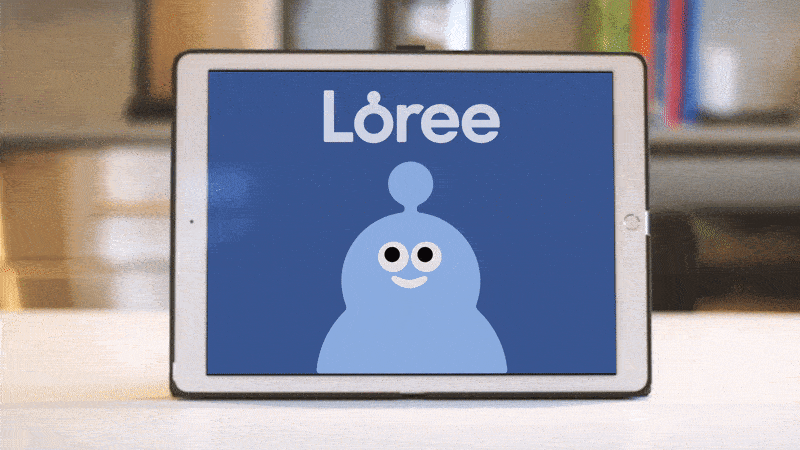Loree voice assistant
Sharing culture and language through Voice A.I.
Loree offers multi-cultural and multi-lingual families a fluent companion and tutor.
She pays attention during conversations she has with you and your child and, through a series of natural language queries, offers rich and relevant contributions to the discussion.
Loree then curates bedtime stories that reinforce the language learning from the day.




MY ROLE:
Product Strategist Interviewer Workshop Facilitator Illustrator
THE CHALLENGE:
Parents raising children overseas find themselves solely responsible for passing on their native language. For many parents, the role is overwhelming, if not impossible, as it requires time, resources, and expertise—all of which few parents are able to provide on their own.
In failing to acquire their parent's native language, children lose a valuable source of identity, as well as the cognitive, competitive and cultural benefits associated with bilingualism.
For my girls to learn Japanese in Brooklyn, it requires a full-time job approach, which is quite exhausting.

Kaoru
THE OPPORTUNITY:
Voice AIs are on the cusp of acquiring natural language processing capabilities. The leap will be transformative for language acquisition as it will allow learners to enter fluent conversations grounded in context and emotion on a more regular basis.
THE SOLUTION:
Loree helps families preserve a link to their native culture through serving as both a conversational companion and curator of bedtime stories. She lives in smart devices and uses a voice-activated interface to converse with, and learn from, children and their parents.
1) Conversational Companion:
Loree participates in natural conversation by asking questions about your child's day.


She flags concepts and themes allowing her responses to remain relevant and contextualized.

2) Storybook Curator:

Loree then uses what she has flagged to curate storybooks for bedtime.

Stories reinforce learnings from the day while introducing new words, themes, and traditions.


DESIGN PROCESS

DISCOVERY
INTERVIEWS
We conducted a half-dozen interviews with bilingual and bicultural parents living in the United States. Our initial conversations were fairly open-ended before narrowing on culture and language acquisition. Interviews surfaced patterns of behavior from which we derived key insights.

Key Insights:
-
Bi-cultural parents feel burdened by the responsibility of building a bridge connecting their child to their native culture.
-
Parents hope to retain influence over who their child grows to become and therefore prioritize shared parent-child activities.
-
Parents are concerned with overexposing their child to technology but make exceptions when technology reinforces core value. (i.e. Facetime + Family)
STRATEGY
PERSONAS
We took transcripts from our interviews and consolidated insights into bicultural, bilingual parent persona cards. The personas highlighted insightful quotations and brought attention to what makes parenting so daunting. In particular, we learned that parents have difficulty raising bi-cultural children with limited time, money, and family support.

COMPETITIVE ANALYSIS
The market serves well-to-do families who can afford private schooling fairly well. The alternatives consist of games and tutoring software that offer little cultural context. The analysis helped us pinpoint white space for an accessible language-learning tool capable of offering rich cultural and emotional context.

DESIGN OBJECTIVE
Design an accessible language-learning tool capable of offering rich cultural and emotional context.
IDEATION
WORKSHOP
Workshop participants were dealt situation cards and personas to design around. Prompts were diverse and encouraged out-of-the-box, divergent thinking. Many of the most inspiring ideas came from non-designers.


CONVERGENCE EXERCISE
We clustered concepts from the ideation session into themes (storytelling, tracking tools, and games) which helped us identify three promising product directions. Storyboards demonstrating ideal use cases for each product were presented to stakeholders. Their feedback helped inform the direction we chose to take.




DESIGN
CHARACTER DESIGN
We spent a great deal of time sketching different versions of Loree. Our goal was to introduce simple features that invited a child's imagination, yet were still capable of relaying complex facial cues and body language. My teammate Jason did an awesome job testing animation guidelines in After Effects.

EXPERIENCE DESIGN
The parents we interviewed considered storytime to be immensely valuable. They saw it as the time to teach, inspire, and mold their child's intellect and personality. Therefore, we prioritized the parent's role over Loree's. Parents would be responsible for reading to their child and could call on Loree for language support if they needed it.

FEEDBACK
AWARDS
Loree went on to earn a 2018 IxD Awards Short List nomination, and this February won the People's Choice Award at the 2018 IxD Awards Show in Lyon, France.


